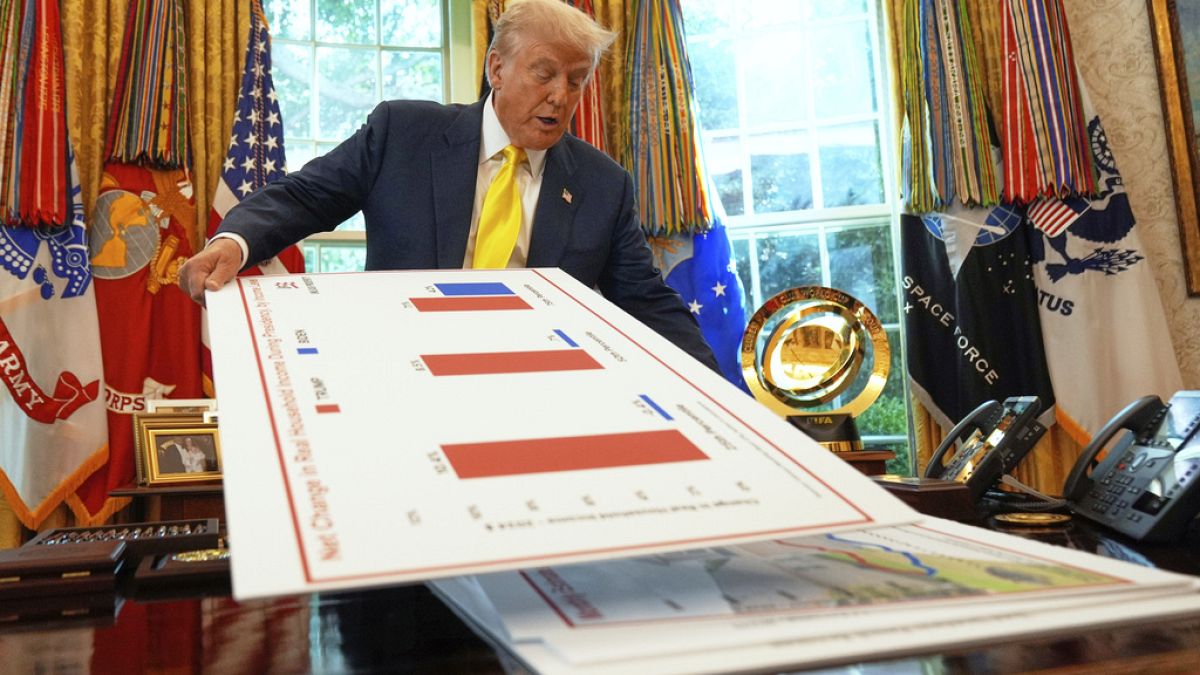In an upgrade from its first estimate, the Commerce Department said Thursday that US gross domestic product — the nation’s output of goods and services — expanded at a 3.3% annual pace from April through June after shrinking 0.5% in the first three months of 2025. The department had initially estimated second-quarter growth at 3%.
The first-quarter GDP drop, the first retreat of the US economy in three years, was mainly caused by a surge in imports — which are subtracted from GDP — as businesses scrambled to bring in foreign goods ahead of Trump’s tariffs. That trend reversed as expected in the second quarter: Imports fell at a 29.8% pace, boosting April-June growth by more than 5 percentage points.
The Commerce Department reported that consumer spending and private investment were a bit stronger in the second quarter than it had first estimated.
Consumer spending, which accounts for about 70% of GDP, grew modestly, by 1.6% year-on-year, after it increased by 0.5% in the first quarter. The government initially estimated a rise of 1.4% for the period between April and June.
Even with an upward revision, private investment dropped at a 13.8% annual pace from April through June. That would be the biggest drop since the second quarter of 2020 at the height of the coronavirus pandemic. A reduction in private inventories cut almost 3.3 percentage points off second-quarter GDP growth.
Spending and investment by the federal government fell by 4.7% year-on-year on top of a 4.6% drop in the first quarter.
The US labour market is holding its breath
Meanwhile, fewer Americans sought unemployment benefits last week as employers appear to be holding onto their workers even as the economy has slowed.
In a separate report on Thursday, the Labor Department said that applications for unemployment benefits for the week ending 23 August dropped by 5,000 to 229,000.
Measures of the job market are being closely watched on Wall Street and by the Federal Reserve as the most recent government data suggests hiring has slowed sharply since this spring. Job gains have averaged just 35,000 a month in the three months ending in July, barely one-quarter what they were a year ago.
Weekly applications for jobless benefits are seen as a proxy for layoffs and have mostly settled in a historically healthy range between 200,000 and 250,000 since the US began to emerge from the COVID-19 pandemic more than three years ago.
While layoffs are low, hiring has also weakened as part of what many economists describe as a “no hire, no fire” economy.
Growth has weakened so far this year as many companies have pulled back on expansion projects amid the uncertainty surrounding the impacts of President Donald Trump’s tariff policies. Growth slowed to a 1.3% annual rate in the first half of the year, down from 2.5% in 2024.
The weakness in the job market is a key reason that Federal Reserve Chair Jerome Powell signalled last week that the central bank may cut its key interest rate at its next meeting 16-17 September. A cut could reduce other borrowing costs in the economy, including mortgages, auto loans, and business loans.

